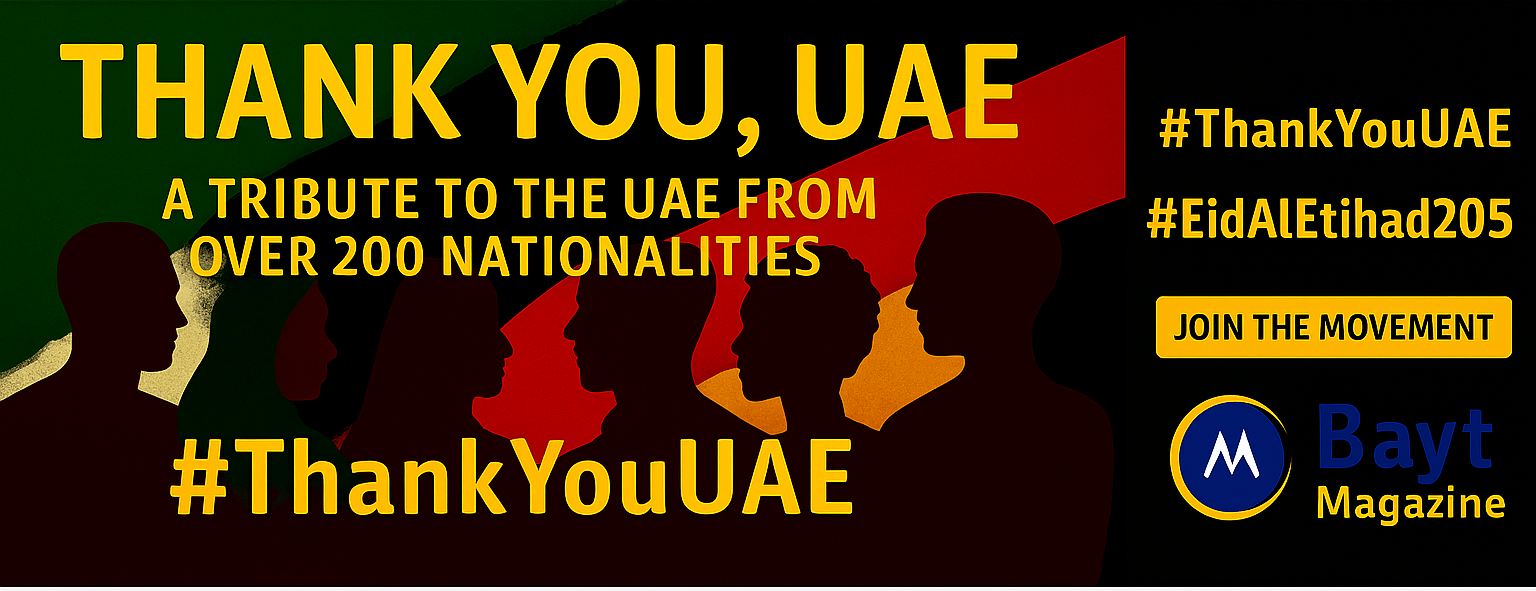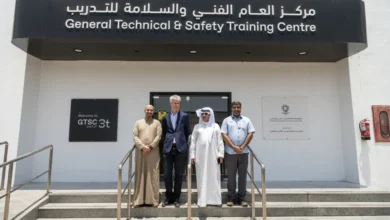
LQMs vs LLMs: The Missing Piece in Middle East’s AI Strategy
The Middle East’s AI strategy is at a vital turning point. Generative AI alone could bring $21-35 billion in annual economic value to GCC countries. The region has shown remarkable initiative in AI adoption. The UAE led the way by becoming the first nation to appoint an AI Minister in 2017. The region’s current focus stays heavily tilted toward Large Language Models (LLMs).
LQMs (Large Quantitative Models) have started to alter the map of AI. These specialized models process complex numerical datasets and are a great way to get advantages for finance, healthcare, and scientific research sectors. GCC organizations’ investment in generative AI stands out globally. They invest more than 5% of their digital budgets – substantially higher than the global average of 33%. The region’s AI strategy needs a balanced approach between LLMs and LQMs to capture the projected $320 billion in economic value by 2030.
Understanding LQMs vs LLMs in AI Development

Image Source: Appian
Large Language Models (LLMs) and Large Quantitative Models (LQMs) are different but complementary approaches in AI development. The Middle East’s AI strategy needs both technologies. Focusing on language models alone won’t be enough.
Technical Foundations of Large Quantitative Models
LQMs come from physics-driven AI principles instead of just data-driven approaches. These models blend advanced computational simulations with machine learning techniques to analyze numerical datasets. LQMs specialize in handling quantitative problems that need mathematical precision, unlike general-purpose AI systems.
A typical LQM architecture has:
- Neural networks optimized for numerical calculations
- Variational Autoencoders for compressing complex data
- Generative Adversarial Networks for refining data samples
- Probabilistic frameworks for managing uncertainty
These elements help LQMs encode phenomena through physics-based models, traditional AI approaches, and historical data to create precise predictions.
How LQMs Process Numerical Data vs. LLMs with Text
These models handle data differently. LLMs process unstructured text from websites, books, and articles to understand context, find meaning, and create coherent responses. They excel when tasks need language comprehension and generation.
LQMs work with structured numerical datasets and apply mathematical, statistical, and physics-based methods to predict complex systems. This fundamental difference makes LQMs crucial for areas where precision matters most.
Scientific and financial contexts show this clearly. LQMs can apply differential equations to data points and ensure outputs follow mathematical laws rather than just finding patterns in text.
Key Differences in Training Requirements and Outputs
Each model type needs a different training approach:
| Aspect | LLMs | LQMs |
|---|---|---|
| Training Data | Historical text data from internet | Numerical, statistical datasets |
| Data Creation | Cannot create new data | Can generate trustworthy data based on principles |
| Learning Method | Self-supervised learning on text | Combines ML with mathematical models |
| Precision Level | May produce coherent but incorrect responses | Delivers high mathematical accuracy |
| Industry Focus | Content generation, summarization | Financial modeling, scientific simulation |
LQMs have a unique advantage. They can create “their own meals” by generating reliable training data through fundamental principles instead of relying on existing datasets. This infinite extensibility helps LQMs solve problems beyond LLMs’ capabilities, especially when optimization needs case-specific objectives and parameters.
Current State of AI Strategy in the Middle East
GCC nations have welcomed artificial intelligence with open arms, but their strategic approaches show an imbalance that could hold back their future growth.
UAE’s AI Initiatives: Progress and Limitations
The UAE proved itself an AI pioneer when it became the first nation to appoint a Minister of State for AI in 2017. The country launched its ambitious National Strategy for AI 2031. This strategy wants to make the UAE a global AI leader and boost economic growth by up to AED 335 billion. UAE now uses AI in many sectors. Healthcare monitoring systems and smart traffic management are just two examples.
All the same, several challenges stand in the way. Deloitte research shows UAE leaders feel ready for AI transformation, but their management teams don’t share this confidence. Data privacy rules also create roadblocks. These rules dictate where companies can store information, especially when national security is at stake. This makes complete data analysis difficult.
Over-reliance on Language Models in Regional AI Development
The Middle East’s digital world shows a clear bias toward language models instead of number-crunching applications. Saudi Data and Artificial Intelligence Authority made big strides here with ALLaM (Arabic Large Language Models). This model topped the Arabic massive multi-task language understanding test.
This focus on language leaves many chances untapped. Companies in the region have barely scratched AI’s surface. Few use advanced machine learning analytics. Only a third of surveyed companies use AI in marketing and sales. The numbers drop even further in other areas.
The $35 Billion GenAI Opportunity in GCC Countries
GenAI could bring massive economic benefits to the GCC region. Conservative estimates put the annual value between AED 77.11 billion and AED 128.52 billion. These numbers represent about 1.7% to 2.8% of the yearly non-oil GDP.
Energy sector stands to benefit most, with yearly gains potentially reaching AED 18.36 billion to AED 29.38 billion. Capital projects, infrastructure, and financial services follow close behind. Right now, 75% of GCC organizations use GenAI in at least one business function. This beats the global average of 65%.
These numbers look promising, but real progress lags behind. Among 140 surveyed organizations, all but ten make less than 5% of their earnings from GenAI investments.
Industry-Specific Applications of LQMs in Middle Eastern Markets
The Middle East’s key industries are adopting Large Quantitative Models (LQMs) to tackle complex numerical challenges that language models don’t handle well. These specialized applications show how quantitative AI plays a vital role in the region’s economic future.
Petrochemical Optimization: Saudi Aramco’s CFD Implementation
Saudi Aramco stands out as a pioneer that uses Computational Fluid Dynamics (CFD) simulations powered by quantitative models. The company ran complex CFD analysis on multiphase gravity separation vessels in 2017. This cut the turnaround time from one week to a single day. Such speed improvements help make better decisions about updating separation vessels to optimize operations throughout oil fields’ lifetimes.
The company’s high-efficiency static mixer at a desalter vessel inlet cut wash water consumption by 17%. This saved over 8.5 million gallons during a nine-month field trial. Their combustion system designs used machine learning grid gradient ascent (ML-GGA) optimization algorithms. The result was up to 15% less fuel consumption and 90% fewer emissions.
Financial Modeling and Risk Assessment for GCC Banking Sector
GCC banks perform better than global averages. They show a 10.9% return on equity compared to the worldwide average of 9.0%. Their revenue-to-assets ratio is 3.2%, exceeding the global average of 2.3%. LQMs give these institutions powerful tools to model economic factor interactions. This helps investors and policymakers make smarter decisions.
The Central Bank of UAE requires regular risk assessments. Financial institutions must use methods that match their size and complexity. Quantitative models support these requirements through:
- Equity valuation and dividend dynamics
- Option pricing and sensitivity calculations
- Interest rate and credit derivatives analysis
- Bond pricing and term structure modeling
Healthcare and Pharmaceutical Research Applications
LQMs analyze molecular structures at the electron level in healthcare. This cuts clinical trial costs and addresses the high failure rates of traditional methods. Quantitative Systems Pharmacology (QSP) models combine data across scales to understand interacting network elements. These models are a great way to get biomarker identification and reduce toxicity risks.
Laboratory Quality Management Systems produce accurate, precise, and reproducible data that’s vital for developing effective treatments. QMS implementation results in fewer medical errors, reduced patient complications, and better outcomes across laboratory, nursing, and radiology departments.
Implementation Roadmap for Middle Eastern Organizations
Quantitative AI models need strategic planning that is markedly different from language model implementations. Middle Eastern organizations must focus on three critical areas to control LQMs when balancing their AI portfolios.
Data Infrastructure Requirements for LQM Deployment
LQMs need strong technical foundations beyond what language models require. Organizations should build modular data architecture that adapts faster to new AI use cases. Research shows high-performing companies are 2.5 times more likely to have this flexibility.
Key infrastructure components include:
- Expandable computation resources for mathematical simulations
- Structured data warehouses with high-quality numerical datasets
- Detailed data governance frameworks
- Advanced technology that uses data efficiently
Research reveals 50% of companies lack a clear data strategy, while 65% don’t have enough technology infrastructure to achieve strong AI outcomes. Successful organizations avoid the “data trap” of endless data product refinement. They create base data products that offer immediate value and allow future customization.
Building Cross-functional Teams with Quantitative Expertise
Quantitative models need specialized talent with specific technical skills. Effective LQM teams should have:
Quantitative analysts who excel at mathematical modeling, statistical analysis, and programming languages like Python, SQL, MATLAB, and R. These professionals need solid knowledge of calculus, linear algebra, probability, and statistics.
A collaborative effort proves essential—technical experts must work with business leaders. Analytics translators bridge this gap by converting technical insights into business results. Current data shows 70% of organizations don’t have the right mix of AI talent.
Integration Strategies for Hybrid LQM-LLM Systems
Middle Eastern organizations can boost their AI investments through hybrid systems that merge LQMs with LLMs. The technical infrastructure should support these complementary approaches from the start. Each system handles tasks that match its strengths.
Financial applications showcase this synergy well. LQMs perform complex technical analysis while LLMs serve as interfaces that explain results clearly. This combination creates powerful solutions where quantitative models provide mathematical precision and language models ensure accessibility and user participation.
Middle Eastern organizations face a defining moment as their AI decisions will determine their competitive edge. Language models dominate current AI projects, but a successful AI transformation needs both LLMs and LQMs working together.
Real-world results prove LQMs’ value in major industries. Saudi Aramco achieved remarkable results with computational fluid dynamics, and GCC banks perform better than global standards through quantitative modeling. These success stories show how LQMs deliver exact, measurable outcomes that language models can’t match.
Organizations need three core elements to adopt LQMs successfully:
- A strong data foundation that handles complex numerical calculations
- Expert teams with deep quantitative knowledge
- Smart hybrid systems that blend LQM accuracy with LLM ease of use
The region’s ambitious AI goals depend on smart investment in both LLMs and LQMs. This balanced approach helps realize AI technology’s full potential, enabling Middle Eastern organizations to capture their share of the $320 billion economic chance by 2030.






